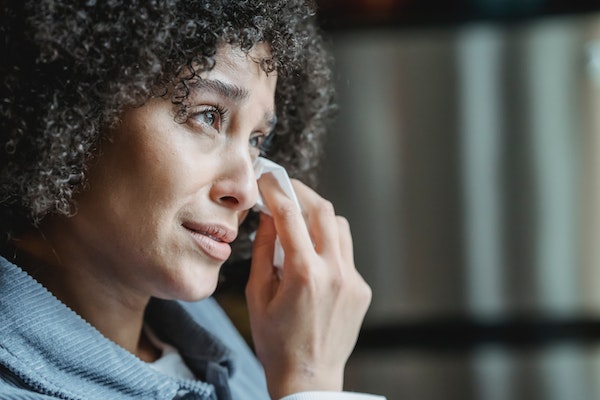It evolved ages ago — the pristine idea that crying has therapeutic effects on our psyche. The Greek philosopher Aristotle believed that crying could purify the mind by alleviating emotional stress — through the expression of emotions. Contemporary psychologists call this progression as catharsis. The idea of catharsis too is not new — it has bearings right from indigenous narratives to the work of Sigmund Freud. This isn’t all. Aristotle believed that theatre served a function in catharsis, just as much as the celluloid, and other platforms, do for us today. Do we not feel relaxed after a bout of ‘crying,’ while watching a Bollywood tear-jerker?
All the same, science has, albeit paradoxically, not understood the chemical drama, or nitty-gritty, of our tears fully. What research testifies is that certain chemicals found in tears, such as beta-endorphins, play a useful role in allaying pain. Tears release emotional tensions too, just as much as a workout at the gym. They also restore our mind-body, or body-mind, to a state of balance akin to meditation.
Crying ‘peps up’ a glut of physiological processes. This is represented by way of changes in one’s facial expression, muscle tension, and also ‘release.’ Many of us know and/or also observed how facial tension escalates in the forehead, while pulling the eyebrows in unison. In like manner, stress brings about changes in the mouth and jaw, while flattening the corners of our lips. When we cry, we release tons of muscular tension. This, in turn, leads to a reflex state of reduced, or resolved, muscle tension — the easing of a stressful situation, tension, or despair.
Crying is a natural response to pain, disappointment, or grief. Yet, most of us shy away from crying, or put up a brave front ‘hiding’ our gloom, or even suppressing it. This ‘bottles’ up our nerves — it can, at some unearthly hour, go askew like a ruptured pressure valve. Remember, we are all creatures of habits. We were chided for crying, when we were kids. The tradition continues. We castigate our children when they cry. The bottom line is — we do not acknowledge the healing power of tears. Crying is nothing short of instant nirvana from unhappiness, or hurt. It helps us to release unwanted, or excess, toxins. If this isn’t natural detox, a process of purging toxins, or chemicals, what is? Crying is indispensable for emotional healing, a process of riddance, or cleansing our body of stresses and tensions accumulated from time to time.
There are different ways of crying with just as diverse effects. As Rebecca Philps articulates in “Best Health,” “The crying that comes with strong emotions — whether it’s deep sadness and grief, or extreme happiness and joy — may offer the biggest health benefits. It releases oxytocin and endogenous opioids, aka endorphins, those feel-good chemicals that help ease both physical and emotional pain. Emotional tears contain higher levels of stress hormones than basal, or reflex tears, and they also contain more mood-regulating manganese, a trace mineral necessary for healthy brain and nerve function. When you release emotional tears, your parasympathetic nervous system is also activated. [This] lowers heart and breathing rates, including blood pressure; it restores the body to a state of balance.”
There’s more to tears than what meets the mind, or eye. We are apparently frightened of our tears. The big, difficult question has always been: “What if I don’t control my tears and allow them to run amuck in front of others?” Well, the point is, there is nothing to fear, so long as we release our tears to face things head-on, without being marooned by a glut of problems that we can’t control, or manage. There is a method to tears — because, where there are tears, there is always a way. All we need to do is re-learn and re-educate ourselves that crying is therapeutic. It is nature’s most wonderful tool to ‘let go,’ or feel relieved when stress hits us with notice, or without warning — and, also gets eased out.
Tears have a plethora of interpretations. As Jonathan Rottenberg, and his co-authors, articulate in “Is Crying Beneficial?” published in “Current Directions in Psychological Science:” “Crying behaviour punctuates the life-course, from our start as helpless infants through adulthood, where tears can mark both our most important moments [e.g., weddings, births, and deaths], and the most mundane of events [e.g., a petty squabble].
A capacity to cry is part of being human. Is it important for our well-being? If one consults Western folk psychology about crying in adulthood, this question is answered strongly in the affirmative. In one analysis of 140 years of popular articles about crying, 94 per cent promoted crying as beneficial and warned readers that suppressing tears would be deleterious to the body and mind. Likewise, the average respondent to a scientific survey also answers affirmatively. In a sample spanning 30 countries, both men and women reported feeling better after crying, even though cultural norms are often less favourable to male crying than to female crying. Indeed, it seems that people will even pay to cry. Films we colloquially refer to as ‘tear-jerkers’ gross millions of dollars worldwide every year. Moreover, more formal theories — from psychodynamic theories that view the blocking of tears as a form of repression that produces psychological damage to biochemical theories that view tears as a means to rid the body of harmful toxins — also affirm the idea that crying is beneficial. Finally, if one consults clinicians, most will say that crying is a positive therapeutic experience, with over 70 per cent of clinical practitioners reporting active encouragement of client crying.”
Crying restores our mind and body to natural balance, also harmony. It is kinetic energy — it does not hinder our ability to feel elated, or blissful. What’s more, it rids us of our accrued negative energy, or old wounds being revisited.
— First published in The Himalayan Times, Nepal

